When you see a group of divers in their gear, you might well think that scuba equipment comes in the style of Henry Ford, “in any color so long as it’s black.”
So are scuba diving wetsuits really only available in black, or are other colors out there?
And are there real, practical reasons why most suits are black?
We’re going to look at wetsuits and answer these questions and others.
We’ll see that there exists genuine popularity for the color, along with practical reasons why most wetsuits are black.
So let’s have a look at where and how suit color matters above and under the water.
- Why Are Scuba Diving Suits Black?
- Are All Scuba Diving Suits Black?
- Does the Wetsuit Color Really Matter?
- Do Wetsuits With Certain Colors Attract Sharks?
- Can I Safely Wear a Brightly Colored Wetsuit?
- Are There Advantages to Wearing a Brightly Colored Wetsuit?
- Which Wetsuit Colors Should I Avoid?
- Conclusion
- You Might Also Like…
Disclosure: this post contains affiliate links (clearly marked with ), which means we may earn a commission if you buy something through them, at no additional cost to you.
Why Are Scuba Diving Suits Black?
Since they first became available in the 1950s, wetsuits have changed many watersports by giving participants readily accessible warmth and comfort, allowing them to take part in their activities for longer and in a broader range of temperatures.
First manufactured for surfing, wetsuits have been developed and perfected for many different water sports where the user is in the water all the time or frequently getting wet.
There are many reasons why diving wetsuits are mostly black.
Some are driven by the manufacturing process, some practical, while others are economical, and some consumer-driven.
Neoprene Rubber
While some of the earliest suits were made from natural rubber, modern wetsuits are manufactured from closed-cell neoprene, a synthetic, waterproof rubber material.
During the manufacturing of the neoprene sheet, gas bubbles (closed-cells) are sealed into the material, and it’s these that give the resulting suits their insulating properties.
The gas bubbles conduct heat slowly and help insulate you from the surrounding water’s cooling effect.
Finished neoprene is black from its manufacturing, and although can be colored, this is a relatively expensive process, and it is not demanded in most of the applications where the material is used.
It is also common to add a carbon filler material to give the neoprene a stronger black color to increase its UV light resistance.
So the core material of any wetsuit is black to start with, and coloring it is costly.
In modern suits, the neoprene core is coated with two protective layers to improve tear-resistance and make it more comfortable and easier to put on and take off.
Typically, the exterior will be a tough material like nylon or silicone rubber, while the inside will be a soft synthetic lining.
These external layers could be colored in any way that’s desired, but as the starting material is black, we can see why the standard finish color for wetsuits mainly ends up black too.
The solid black core means that any coloring needs to be thick to show properly and hence relatively costly compared with a black surface.
Popularity and Economics
Fashions come and go, but black always remains popular.
Even though there are arguments that brighter colors might be more visible and hence safer, black remains the popular choice for wetsuits.
Simple economics suggests that if there were a significant demand for brightly colored suits, then manufacturers would fill it quickly to encourage sales.
But in reality, this hasn’t been the case in the long term.
For example, in the 1960s, as the wetsuit market was developing, the British company Dunlop launched a bright yellow high visibility wetsuit, the Aquafort.
It promoted this new colored suit as an advancement in diver safety.
But it soon proved to be a failure due to lack of public interest, and Dunlop fell back into line and produced black suits to regain lost sales.
Photos from the 1980s are filled with scuba divers clad in all kinds of bright fluorescent colors, as was the times’ fashion, but these have soon died out, and suits have since returned to mostly more conservative black.
So long as black is a color people are happy with and is cheaper to produce in volume, it’s likely that manufacturers will continue to make their suits mostly in this color.
But why do people like black suits so much?
5 Reasons Why Black is So Popular For Scuba Wetsuits
1. Black is the easy, popular choice
While black might not be someone’s favorite particular color, it’s the single color that most people feel comfortable enough with and will accept.
2. Black matches everything
You don’t have to worry about a black suit not matching with whatever color fins or mask you have. You know black will match whatever else you put it with.
3. People are happy to accept black
You’ll never look out of place or stand out in black so it’s an easy purchase decision.
4. Black is slimming
It’s true that form-fitting wetsuits aren’t ever going to be incredibly flattering for the average person, but a black suit is generally regarded as being slimming and will help you look as good as it gets.
5. Black is seen as a “serious” color
If you’re ready for action and adventure, then a black suit projects this better than a fluorescent yellow one ever will.
Whether you care about this is, of course, down to the individual.
Are All Scuba Diving Suits Black?
Although black is the most common by far, many options add color to your diving.
Most of the major manufacturers make suits with colored panels to add to the mainly black outfit’s appearance.
Camouflage effect suits are particularly popular with freedivers and spearfishers.
With a custom-made suit, you can have any color or design that you want.
There are suits in bright colors and even ones that look like superheroes or an underwater tuxedo.
Remember, though, when choosing your favorite color or design that that color appearance changes with depth.
First reds are lost, then orange, yellows, and so on.
So your colored suit will look utterly different underwater and change the deeper you go until a point where you might not be able to see the color at all.
Does the Wetsuit Color Really Matter?
As well as being a popular visual choice, there are some solid reasons why black is an excellent color for wetsuits that have helped it being the most common option.
- After a dive, a black wetsuit will get warmer in the sun faster
Black absorbs the most energy from the sun of any color, and so when you hang a black suit up to dry between dives, it will dry faster than a lightly colored one.
- Black colored suits will show dirt less
- Black is more resistant to wear and fading
Generally, dark colors show wear less and are more resistant to fading than other colors, especially when used in the bright sun.
- Black will always be black underwater
Other colors will change in appearance the deeper you go underwater, but your black suit will always look the same.
Do Wetsuits With Certain Colors Attract Sharks?
Although the subject of a lot of rumor and speculation, there is no reliable scientific data to back up the claim that specific colors attract sharks.
In particular, the color yellow has a bad reputation for causing sharks to display curious behavior, but in general, this is not considered demonstrably true by experts.
Sharks do see color, but it is thought that they are most sensitive to contrast.
So if there’s a particular worry about sharks, good advice is to keep equipment and suits all one dark color.
To rationalize concerns about color, it should be remembered that sharks use other senses like smell and their sensing organs from great distances far before sight comes into play at all.
A shark is NOT going to hunt you out from miles away due to your wetsuit or fin color.
Always keep in mind that shark incidents involving scuba divers are incredibly uncommon and the risk is very low.
You can probably relax about your choice of color if you are diving where there are sharks, but if you are concerned, then keep everything the same and avoid bright yellow just in case, and follow responsible shark diving advice.
Can I Safely Wear a Brightly Colored Wetsuit?
Yes, you can wear a brightly colored suit safely.
It could be argued that you will be safer than a diver in a black suit as if you should happen to get lost at sea, you’d be easier for emergency services to spot.
Remember that your suit color will change the deeper you go underwater, so it’s worth reminding your buddy of this and making sure that they’re not trying to use the bright suit color to identify you at 100ft / 30m deep.
That aside, there really aren’t any practical dangers to you choosing to wear a bright suit, except perhaps your buddies not wanting to take photos with you if it’s particularly garish.
Are There Advantages to Wearing a Brightly Colored Wetsuit?
There are certainly arguments for bright exposure suits for scuba diving, particularly in more challenging conditions.
Divers at the surface with brightly colored suits are far easier to see and would be more visible to the dive boat for pickup, or search and rescue services in the event of being lost.
Another more down-to-earth benefit of a brightly colored suit is that it’s much easier to find amongst all the black ones at a dive center or on a dive boat.
A distinctly colored or patterned suit might also be more straightforward for your buddy to keep track of underwater amongst a group of divers.
Just remember about color change at depth.
Which Wetsuit Colors Should I Avoid?
Probably it’s best to avoid really light-colored suits as these will show dirt more and are likely to get discolored by the sun’s UV rays faster than black suits.
But other than this, really the choice is entirely up to you as you’ll be the one wearing it.
Consider when making your purchase that a wetsuit is something that you’ll be buying for many years of use.
So give some thought to what might seem fun now, but might not be so practical in the future.
Conclusion
So we’ve seen that the reason scuba wetsuits are mostly black comes from several factors; some down to manufacturing, some economical, some practical, and some because people just like or accept the color.
But whatever color wetsuit you choose to dive in, enjoy your diving, stay safe and remember that your buddy is more important than the color of suit they’re in.
You Might Also Like…
-

How Do Scuba Divers Drink Water? 5 Possible Ways (+7 Tips)
-

How Long Can Scuba Divers Stay Underwater? (+9 Limiting Factors)
-
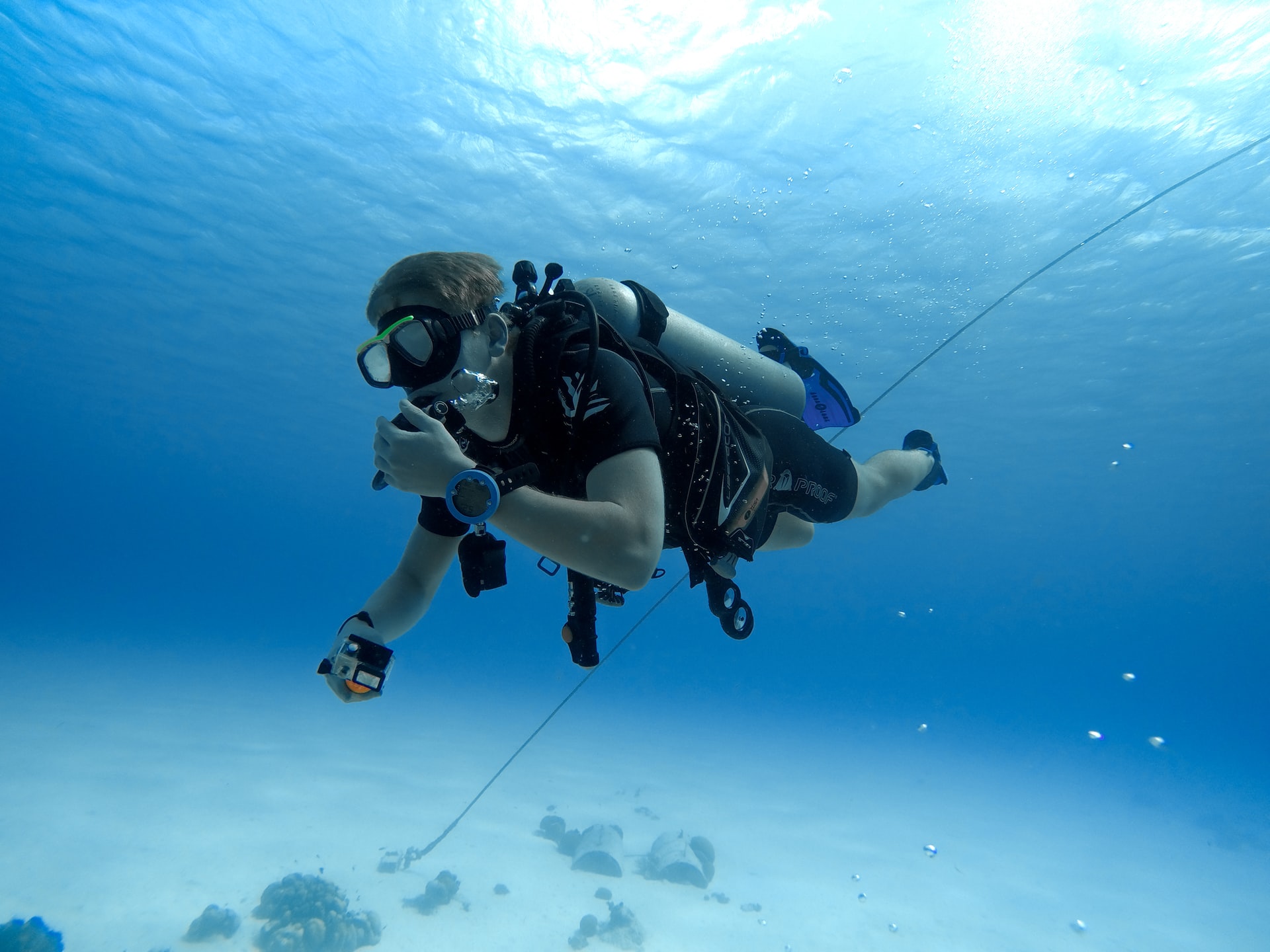
Are Scuba Divers Athletes? All the Facts (+New Competitive Forms)
-

Are Sharks Scared of Scuba Divers? (What Every Diver Must Know)
-
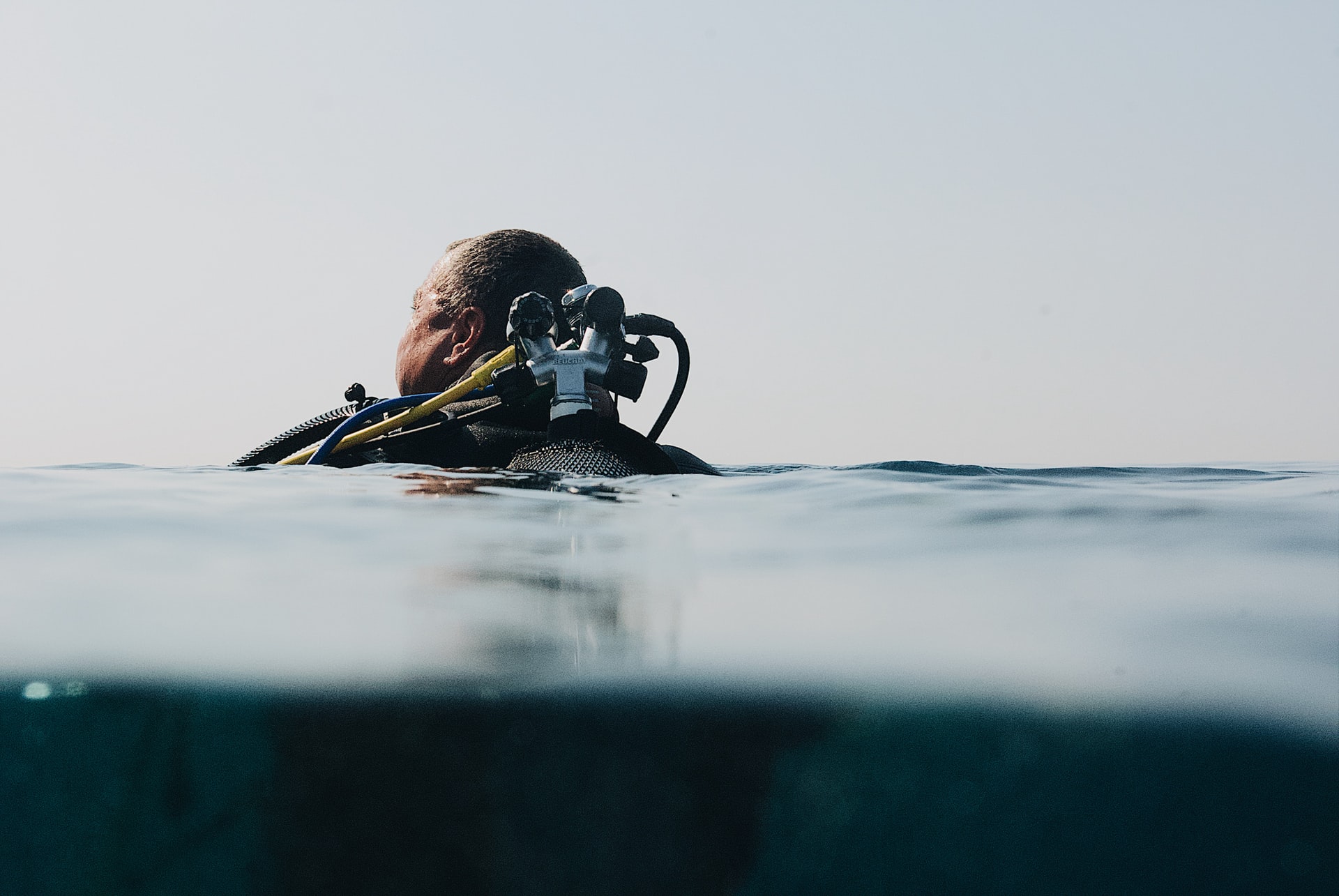
Who Should Not Scuba Dive? 17 Reasons (Every Diver Should Know)
-
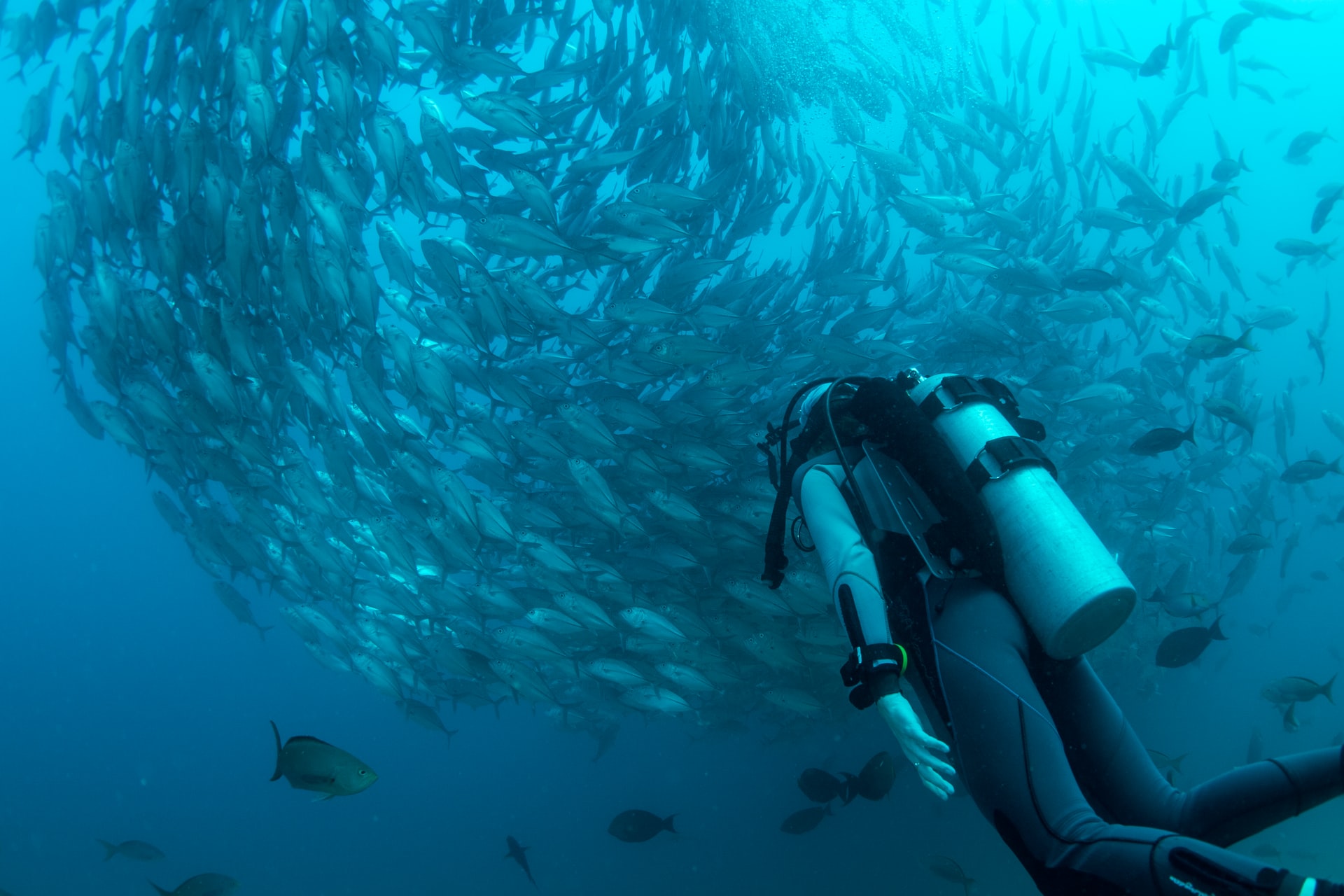
Should I Be Scared of Scuba Diving? 8 Common Fears (Debunked)
-
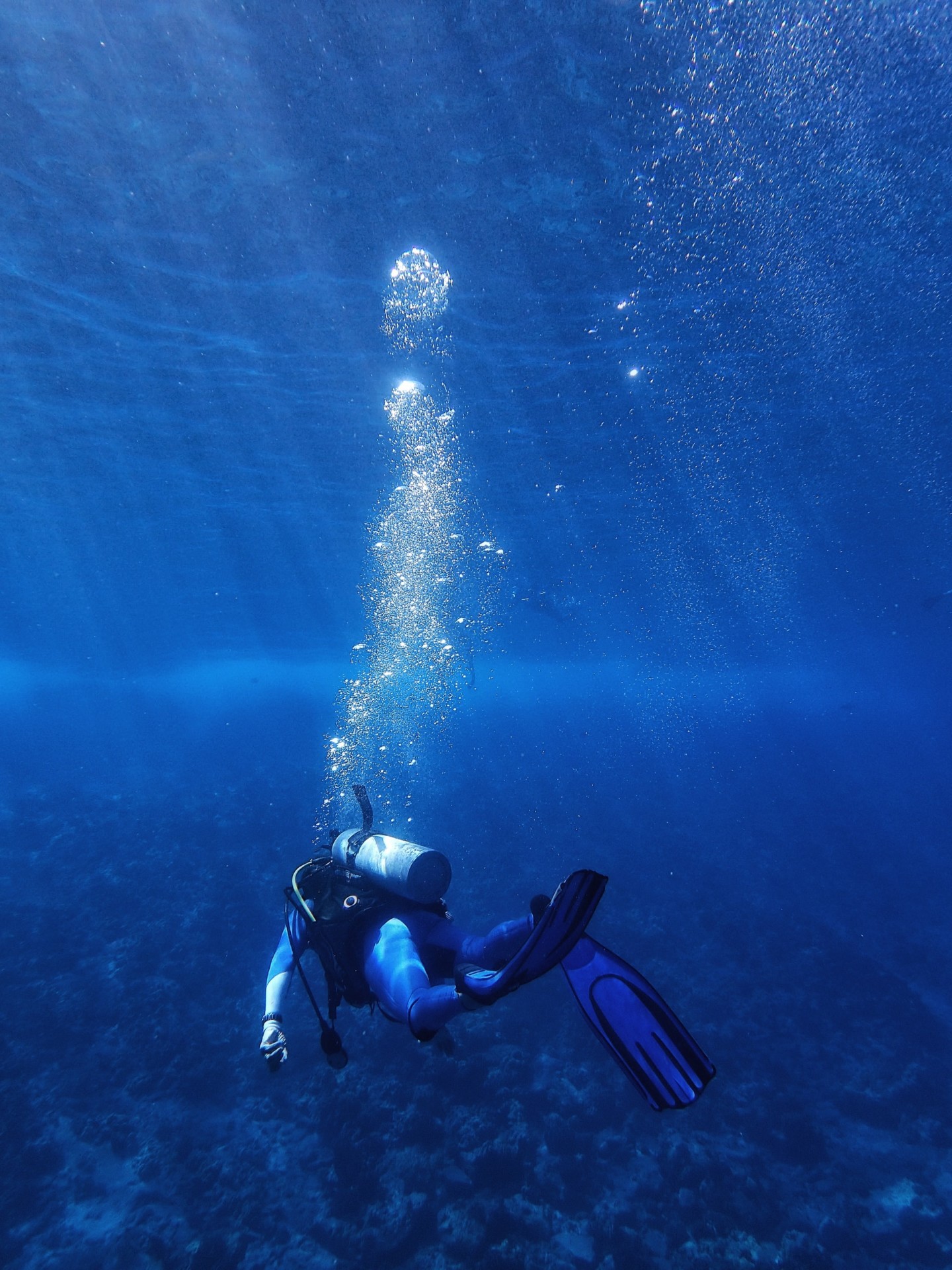
Why Do Scuba Divers Use More Air at Depth? (+4 Practical Tips)
-

At What Age Should You Stop Scuba Diving? (+9 Tips for Older Divers)
-
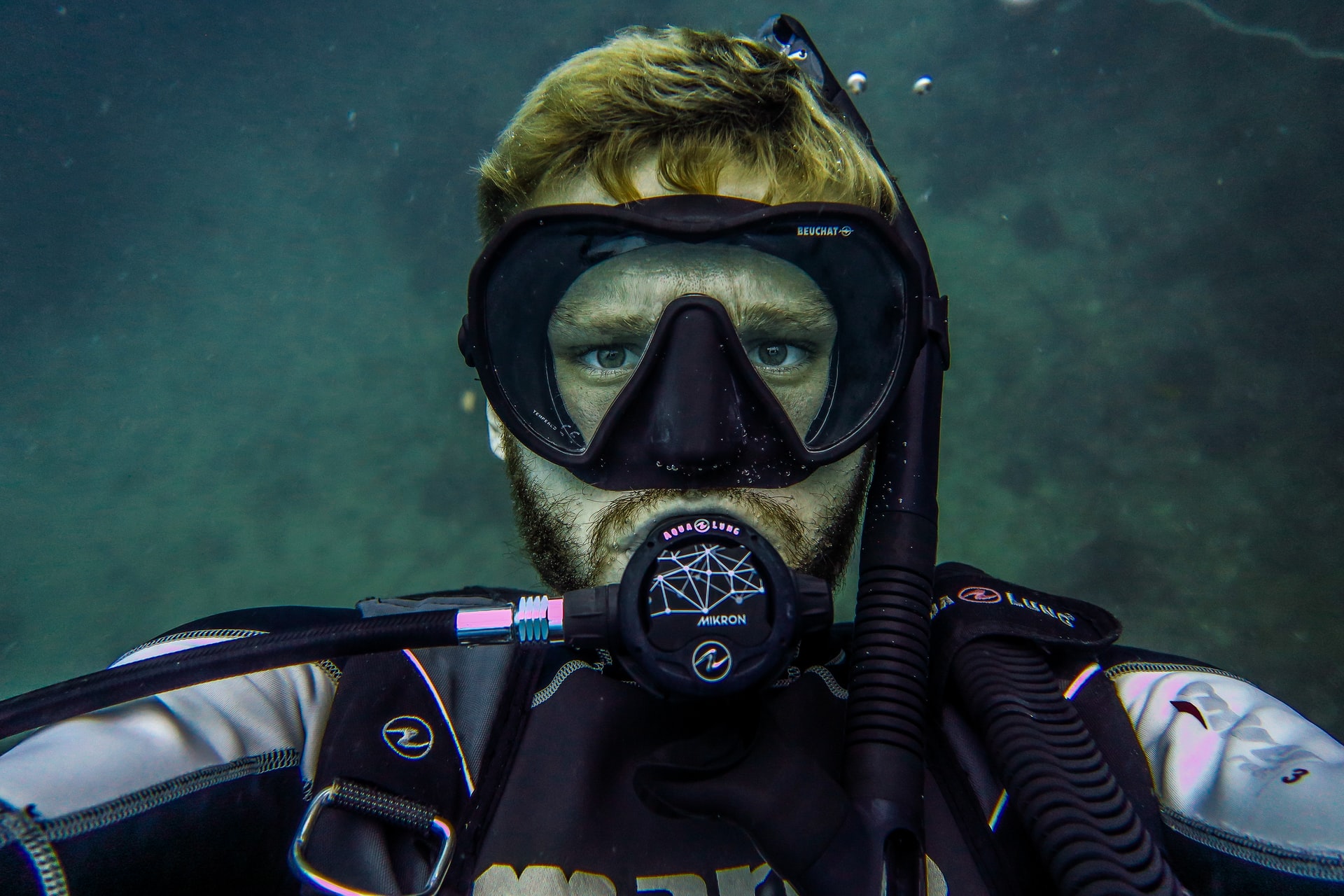
Should I Shave Before Scuba Diving? Crucial Facts (+9 Helpful Tips)
-

Why Do Scuba Divers Use Helium? (+Its Pros & Cons)
-

Why Do Scuba Divers Go in Backwards? (+3 Alternative Entries)
-

How Do Scuba Divers Sink and Float? (+Tips to Get It Right)










